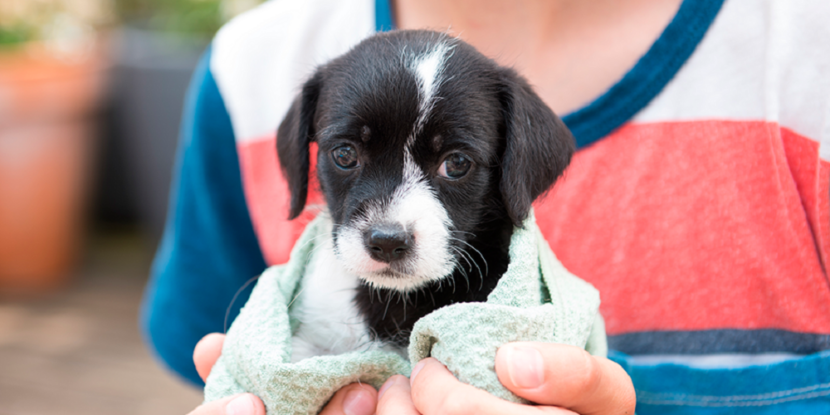The arrival of a baby at home is a big change for the whole family and, of course, it is also experienced by our pets.
In this way, just as we prepare with enthusiasm in our home to receive the little newcomer, we must act in the same way with the animals in the house. To do this, we can put into practice some simple tips that will make adapting to the new situation easier and more successful click here for more info.
Before the baby arrives, get your dog used to a realistic schedule that you think you can stick with once the baby is home. Begin feedings and walks at times you will be able to when the baby is around. This schedule will probably be very different from the current one, and it is better that the dog does not suffer all the changes at the same time, coinciding with the arrival of the child.
It is also time to think about changing the mechanism you use to lead the dog, if you walk him with a normal collar, harness or choke collar, and your dog pulls on the leash or does not behave properly, it is time to change to a “halti” . This type of collar, similar to a horse bridle, is the best method to teach your dog to behave during the walk, without having to make any effort.
Include in this schedule 5-10 minutes of attention just for the dog . This period will be a quality time for the animal, once or twice a day. Take the opportunity to caress him, brush him, play with his toys, etc. Always keep this time reserved for him, at about the same time every day, and make sure you can keep it the same once the child arrives. Although everyone will have to get used to the new schedules, this is one way of conveying to the dog that it still counts, as it feels important.
Before the baby arrives, let your dog into your room and into the diaper changing area . Do not keep him out of the baby’s rooms all the time, new smells will attract him and he must get used to them as quickly as possible. Buy the lotions, the powder, the diapers… and let the dog smell them, before bringing the baby home.
If he tries to take something from the baby, correct him with a “NO” or “WRONG” and have him bring it to you and give it to you. It is time to teach him good manners: sit, stay, lay down, catch and release , if he does not know how to respond to these basic commands, before the baby arrives, he will have more problems. Take advantage of the time you have left before the arrival of the child, go to a work group or a trainer if you do not have time. By the time the baby arrives, your dog should respond to these verbal commands quickly.
Do not let your dog climb or lie on any child’s furniture. Correct him now that his baby is not present, and you will avoid problems with the child in front. If your dog has stuffed or rubber toys that are similar to your baby’s, think that he will not know how to distinguish between the toys . If you wash them after the dog has used them, they won’t pose any health problems for the child, but as soon as the child gets a bit older they may start fighting over the dolls.
It can also happen that your dog steals the toys from the child’s hand, or that the child tries to take the toy out of the dog’s mouth. This is when you are most at risk of having an accident. To avoid this, get him used to new toys, which are nothing like your baby’s, and teach him to drop them on command.
When the baby is born, have your partner or the person staying behind to care for the dog bring used baby clothes . This will teach your dog the new smells that he is going to have to get used to. Let the dog smell them and spread them around the house. Don’t let him pick them up in his mouth or nibble on them.
When your baby comes home, the dog will want to say hello to everyone, especially the mother who has been away from home for a few days. Try to have someone stay with the child for a few minutes, while the mother attends to the dog, and until it calms down. If he jumps up or is very nervous, put him on the leash to say hello, or greet him in a different room. Once he is calm, and everything is back to normal, you can introduce the baby to the dog.
Once your dog has greeted all the adults who have come home from the hospital, and is calm, we can start with the introductions. Have a family member sit on the couch with the baby on your knees. Then you can be free to control the dog. Let him sniff the baby, come closer and investigate. Put him on the leash if you are not sure how he will react, or if he is fussy or somewhat snappy, shy or reacts with fear to the baby, pet him and talk to him softly, encourage him to come closer. Do not force him or bring the baby close to him.
If your dog growls at your child, scold him and move him to another room . Try again when he has calmed down. Never tell the dog “okay, calm down” or any words of encouragement while he is being aggressive. What the dog understands is that we reward him for that behavior, which is the opposite of what we want.
If aggressive behavior cannot be stopped with a voice, you can use a stream of water from a plant sprayer or a toy water gun. What matters is that your pet is surprised, not more scared. Once the growling has stopped, walk away and put the dog in another room until he calms down. Especially if your dog is afraid of the child, he should be very careful the first days .
If after 3 weeks the dog accepts the child without fear or aggression, it can be released from the leash . If not, he will have to stay longer with it on. Try to have one partner attend to the baby, while the other attends to the dog, and take turns. Never leave the dog alone with the child until the child is old enough to react well to the dog. If your dog continues to show fear, or aggression, you should expose him to the baby very little by little., rewarding each calm and happy moment of the dog, scolding verbally and separating the child from the dog as soon as the latter shows the slightest sign of fear or aggression. Be very patient. When in doubt, put the muzzle on your dog, but do not trust yourself with just a careless push that can hurt the child at any given time.
When there is only one person at home with the baby, do not let your dog run free in the baby’s presence. Carry him on a leash or keep him in another room while you attend to the child. You can’t hold a baby in your arms and at the same time correct a dog that pounces to say hello, or crosses your path to chase a ball. It is best to have him on a long leash , so that he can move around the room while looking at us, but not reach the baby if he suddenly wants to investigate him more closely or play with him.
Never leave the animal alone with the child for any reason. Keep in mind that your dog will take advantage of any inattention to come to investigate without your supervision, and when you have a child this happens several times a day without us noticing: the phone rings, there is a knock on the door, we are preparing a bottle at night … these short periods of free time are the ones that your dog can take advantage of to make a mischief, there are not only aggressiveness problems, the animal can overturn the baby’s crib out of curiosity or climb on it and hurt it with its paws, and this is what to avoid as much as possible, either leaving the child behind a baby gate or tying up the dog.
Once your dog has gotten used to the baby, and is affectionate and sociable with him, there is no problem with him following you around the house while you attend to the child. Insist that he obey verbal commands, or in a very busy time, with the child, the phone and the diaper, he will not be able to control the dog, and complicated situations can be created.
Under no circumstances will the dog be allowed to sleep in the same room as the baby . Use a monitor, radio, or baby gate, so you can leave the child alone in her room.
For the rest of the relationship with the child in the future, it is important to follow these instructions:
- never let the baby/child play or interact with the dog unsupervised, until the child is old enough to behave appropriately with the dog (and this can be until they are around ten years old).
- educate your child to treat the dog : teach him to respect the food and the moments of rest of the animal , to be affectionate and caress it .
- Be careful with old dogs , with osteoarthritis, otitis or other chronic pain that may react with fear or pain on contact.
- Also be very careful if your child is very active or rough.
The second most frequent cause of problems between children and dogs is from the time the child begins to walk until he is about four or five years old. During this period, children walk with little coordination, they fall, they grab on to the first thing they catch so as not to fall… if this is your dog, it may not take it or it may get scared. Watch out for any play between them, and scold the one who plays rough, especially avoid the one in which the dog pulls an object with its teeth trying to tear it out of a person’s hands.
Think that an adult is capable of interpreting the basic language of the dog, an example, if the dog growls at us when we take away food or pull its ear, we stop doing it, the animal warns us before biting, but a small child does not understand the meaning of the growl and will continue until the bite is taken.
It is just as important to teach the dog to treat the child as it is to teach the child to treat the dog . This way we will avoid dangerous situations for both of us.
If, despite all these measures, you observe reactions in your dog that worry you, be responsible, go to an animal behavior professional and ask for advice.

